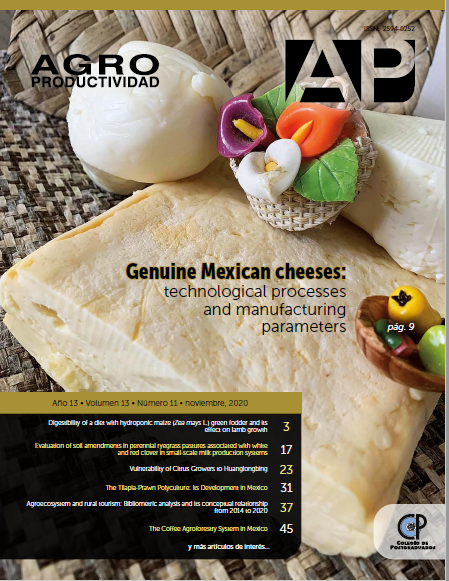Genuine Mexican cheeses: technological processes and manufacturing parameters
##plugins.themes.bootstrap3.article.main##
Keywords
Resumen
Objective: To give an overview of the current situation of Mexican genuine cheeses (MGCs), their characteristics and their production processing conditions (milk origin, coagulation agent, type of ripening and maturation).
Methodology: Information on about twenty MGCs available in scientific articles, databases, and Internet pages was collected, analyzed, and classified.
Results: The main classification of MGCs is made with respect to their moisture content (soft or fresh, semi-soft or semi-hard, and hard). Most MGCs are not matured, thus limiting their shelf life and large-scale commercialization. Matured MGCs use their own microbiota, developing characteristic textures and flavors.
Limitations: There is little research on the MGC manufacturing processes and their impact on the physical and sensory properties of the final product. Furthermore, no MGC has a designation of origin, which is a disadvantage on the global market.
Conclusions: Most MGCs are produced manually and only few of them are produced on a (semi)industrial scale. Standardizing their production would allow their producers to make improvements and innovations on MGCs and increase their shelf life.

